
Preventing clinician burnout is an integral part of fostering long-term health system success. But even before COVID-19 hit, healthcare workers struggled against burnout, and the pandemic has only worsened the problem. According to a Mental Health America (MHA) survey of 1,119 healthcare workers conducted from June-September 2020, respondents indicated they were:
Among the many concerning findings, “93% of health care workers were experiencing stress, 86% reported experiencing anxiety, 77% reported frustration, 76% reported exhaustion and burnout, and 75% said they were overwhelmed," the study cites.
Many factors contribute to clinician burnout beyond the capacity of health IT, but technology can play a role in both causing or alleviating the issues.
As pressures increased throughout the pandemic, Bill Russell spoke with a number of experts about the dynamics involved and what types of digital solutions can help solve and prevent clinician burnout.
So, how is healthcare technology playing a role in clinician burnout? Taylor Davis explained his perspectives on the topic.

Taylor Davis, EVP of Strategy and Analysis at KLAS Research
Davis is the EVP of Strategy and Analysis with KLAS Research. His work also involves the organization’s Arch Collaborative, which KLAS describes as “a group of healthcare organizations committed to improving the EHR experience.”
In over a decade with KLAS, Davis explained how he has witnessed the rise of the electronic health record (EHR). In that time, they have conducted thousands of interviews with healthcare leaders—including Chief Medical Officers (CMO), Chief Medical Information Officers (CMIO), and Chief Information Officers (CIO). He said he regularly hears about struggles with the EHR.
The quality of the software itself does make a difference, but he relayed how users in different organizations can have different experiences, even if they’re using the same platform. One EHR satisfaction survey KLAS was involved in a number of years ago demonstrated this dynamic.
“We had two organizations that were using the same EHR and the feedback was night and day different. One was incredibly satisfied with it and one had their physicians just screaming angry about their experience,” he said. “It was at that point that we said, okay, there’s something really interesting here. Two organizations using the same software having very different experiences.”
As a result, the Arch Collaborative began. It works to provide a means for organizations to better understand the issues and benchmark against each other.
“This survey that has been developed and continues to evolve has now been deployed to 154 organizations in seven countries around the world. As a result, we’re really starting to learn a science of what drives success,” Davis said.
Davis referred to the EHR as a test of leadership, teamwork, and culture. Organizations that lack strength in these areas will not achieve the results they need, he explained.
“That doesn’t mean you can’t improve your leadership. It doesn’t mean that you can’t improve your teamwork. A lot of times, the insights from these users identify those opportunities,” Davis said.
Therefore, the Arch Collaborative survey aimed to specifically address clinician burnout.
“We’re using the single question Burnout Inventory from the American Medical Association. …By that measurement there is very little variation between different organizations. …We believe that mathematically right now in the stats, about 10 percent of burnout is driven by the EHR,” he said.
Davis described why the EHR is just one contributor to clinician burnout and is a “magnifying glass” for other factors that influence this dynamic more.

Dr. Michael Pfeffer, CIO of UCLA Health Services
Dr. Michael Pfeffer said clinician burnout is multi-factorial and includes things like administrative burden, regulatory challenges, malpractice concerns, and the rise of consumerism.
Pfeffer is the Assistant Vice Chancellor and Chief Information Officer of UCLA Health Sciences. He weighed in on his perspective on clinician burnout at the 2019 Health 2.0 conference.
Once again, the EHR came up in the discussion about factors contributing to clinician burnout. In the era of COVID-19, another technology contributor has begun to emerge: factors involving telehealth and remote care.
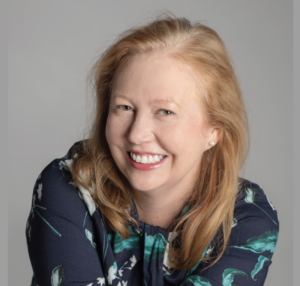
Kristin Myers, CIO at Mount Sinai Health System
Regarding the impact of the EHR on clinician burnout, Kristin Myer recapped an Epic conference she attended.
Myer is Executive Vice President, Chief Information Officer and Dean for Information Technology at Mount Sinai Health System, an academic medical center that has seven hospitals, over 6,500 physicians over 300 locations, and 30,000 employees.
Myer described the challenges involved with providing the personalized training and support needed to so many providers to optimize EHR use—as well as how her organization is helping physicians be more efficient to aid in preventing clinician burnout.

Ed Ricks, Director of Healthcare at Sirius Healthcare
Ed Ricks, the Director of Healthcare for Sirius Computer Solutions, relayed a study on Newsday which explored the effect of EHR usability on nurse burnout and patient outcomes.
The results of the study, Electronic Health Record Usability: Associations With Nurse and Patient Outcomes in Hospitals, indicated that poor EHR usability contributed to “significantly higher odds” of burnout, job dissatisfaction, and “intention to leave” among nurses when compared to their peers who worked in hospitals that had better EHR usability.
David Butler, MD, CEO of Calyx Partners, offered a perspective on the impact of telehealth and remote care on clinician burnout.
Butler discussed how the transition in providing remote care through telehealth has been a struggle for some providers. Since in-person contact with patients and colleagues is so limited, technology issues may create additional challenges.

Dr. David Butler, Calyx Healthcare Partners
Butler also noted that interacting through video technology can add to the burden some providers are experiencing.
“Certain facial nuances are removed and also you are two dimensional. I can’t look over here and talk to you. When I’m looking here, I’m not looking in that camera, and I know that. But I want to look at your face. I don’t want to look at the camera. Those are the types of things I feel that are wearing on us over and over,” he said.
Butler was also concerned for providers whose mental health may be affected by all the changes. The risk is even greater if they are hesitant to ask for help, he said.
“I’m an extrovert. So this has really been hard on me. I think I’m really good with insight and I’ve talked with therapists and stuff like that, too. I think every doctor should. If you don’t talk, it’s really difficult,” he said.
The additional burden with the onset of the COVID-19 pandemic has highlighted the need for preventing clinician burnout. Additional requirements, new workflows, and increased pressure have only further swamped an already-overwhelmed healthcare workforce.
Relatedly, McKinsey & Company published research in August 2021 that may have brought hope to burned-out clinicians: Survey: Patient Volumes Reportedly Moving Back to 2019 Levels.
However, the healthcare leaders polled had varying strategies to address it. For instance, some planned increased hours or staff to deal with an anticipated mismatch ahead between a rise in patient demand and the constrained capacity to meet it.
“To address these challenges, more than 50 percent of hospital respondents said they would expand their clinic hours to increase outpatient access. Other provider responses include hiring more physicians, increasing physician productivity expectations, hiring more clinical support staff, increasing marketing to patients, and proactively calling patients who have delayed care,” McKinsey & Company reported.
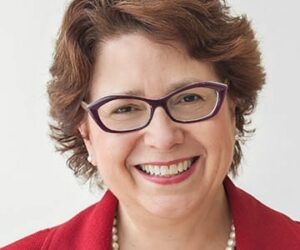
Sue Schade, StarBridge Advisors
In that light, clinicians may be asked to do even more, and the need for digital tools to prevent burnout takes on a new urgency. Fortunately, there are options for preventing burnout using technology. But to make the most of them, it’s essential that health IT leaders find a way to engage with clinicians throughout the organization. By doing so, they will have a thorough understanding of what the issues are and how they can work together to solve them.
Sue Schade, a Principal at StarBridge Advisors, commented on the results of the McKinsey & Company research. When serving as the acting CIO at Boston Children’s Hospital, Schade was interviewed for the episode referenced here.
Regarding how health IT can help prevent clinician burnout, Schade noted what a big impact staffing issues are currently having on healthcare workers.
She explained the importance of understanding and identifying the technology-related pain points felt by clinicians. Additionally, she stressed how health IT can alleviate stress by offering relevant solutions for the challenges practitioners face.
Schade also underscored how important it is for IT leaders to garner feedback from clinicians. For example, teams can implement some type of rounding structure and then discuss results with the IT staff.
“Getting that frontline feedback in all areas is absolutely critical,” she said.

Josh Wilda, CIO at University of Michigan Health-West
One healthcare organization that is effectively preventing burnout using technology is the University of Michigan Health-West (formerly Metro Health). Their team has begun implementing Nuance’s ambient listening technology, Dragon Ambient eXperience (DAX).
Nuance's Diana Nole spoke with Metro Health's CIO Josh Wilda and CMIO Dr. Lance Owens about their technology. At University of Michigan Health, Wilda and Owens have undergone implementation. Now, they understand why their clinicians say it’s an exciting digital tool. It has the potential to prevent burnout, they explained.
University of Michigan Health-West is a 208-bed community hospital in the greater Grand Rapids area. Its outpatient services include approximately 300 providers in various specialties working in approximately 30 different clinics across the region.
“We are very highly intelligent when it comes to being patient centered with a provider focus,” Wilda said. That’s one reason his organization implemented DAX.
According to Owens, their organization has been working with Nuance and its products for many years. Over time, their relationship has deepened and progressed.
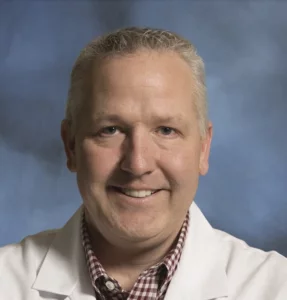
Dr. Lance Owens, Chief Medical Information Officer at University of Michigan Health-West
“We’re looking to continue to advance our relationship broadening our use of DAX using the clinical documentation improvement tools they have within the Nuance suite,” he said.
As a clinician, Owens expressed how meaningful it is to connect authentically with his patients again. His system's implementation of the DAX solution has allowed him to use their "digital arms to wrap around our patients and hug them with this technology so it’s not intrusive to what we’re doing." Their DAX usage strives to make this principle a reality.
“I can’t tell you how exciting it is to just sit back and look my patients in the eye, have a meaningful conversation, and not have to worry about the documentation," he said. "I’m able to fully focus on the information, synthesize a plan, execute my education and my regimen that’s going to help my patients. And I know that the documentation is not going to miss a beat. That is just incredible for me as a provider.”
Owens explained that other physicians have had overwhelmingly positive feedback to this approach of using technology to prevent clinician burnout.
“I honestly feel that Nuance has the life preserver for healthcare and I am honored to be [part] of throwing it out to our providers. I have a whole list of positive comments, but I mean, I’ve walked into a practice and a doctor has literally ran up to me and hugged me and said, ‘You have saved my life.’ I had a doctor tell me that ‘You fixed healthcare in one button because the DAX product is so easy to use,’” he said.
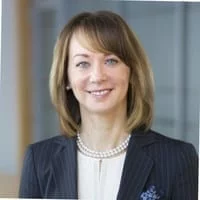
Diana Nole, Nuance
Wilda said he sees what a difference it’s making in both reducing and preventing clinician burnout associated with documentation required to adhere to regulations, as well as other factors.
“I like to say what you’re getting back to as a provider is that patient-provider connection again. That’s what’s coming back, which you’re moving forward with the new technology,” he said. “There are a lot of patients who have never had the experience of having this kind of connection with the providers. That’s a big piece of what we’re hearing too.”
One key to their success so far has been giving providers options and letting them decide what works best for them, according to Owens.
“We try to provide a suite of tools so a provider can choose the best tool, at the best time, for the best reason to make them efficient and high-quality providers. DAX is just the next step to that,” he said.
Nole described the powerful way in which ambient clinical intelligence (ACI) operates.
“Right now, the technology automatically captures and contextualizes every word of the provider-patient encounter. So it has to understand who’s the provider and who’s the patient, which is really intriguing. The physician statements and the relevant patient responses. That’s all added to the clinical note, really eliminating the need to actually type or dictate information into the EHR,” she said.
Nuance has envisioned many potential applications for DAX. However, it is currently geared primarily for an office setting, according to Nole. She also acknowledged that “different people have different concerns.” For example, some physicians want to maintain a sense of control and understand what the technology is doing. This is why ongoing conversations with clinicians is so important, she explained.
“We also were very sensitive to not wanting anybody to feel uncomfortable in these settings, patient or physician, in terms of what is happening in the background,” she said.
Wilda said the patient feedback has been surprisingly positive to those utilizing DAX.
“They see where healthcare is going. And they’re saying, yes, we want to be a part of this,” he said.
Nole said this type of technology is helping to unlock some of the potential many hoped for when the EHR was first implemented.
“Now we’re kind of bringing it to life in a way that’s also providing a much better experience for both the patients and the physicians,” she said. “So I think that right now, trying to prevent provider burden and the burnout is really focused around helping them make a really good note that gives an account of what happened in the office.”
Tressa Springmann, Senior Vice President and Chief Information Officer at LifeBridge Health, spoke on using technology to prevent clinician burnout.
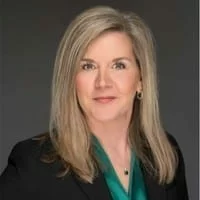
Tressa Springmann, CIO at Lifebridge Health
LifeBridge Health is an integrated delivery network comprised of five acute care hospitals and a variety of additional offerings that span the care continuum.
She referred to the crisis of the pandemic as a catalyst that has accelerated many previously unconsidered results. The added requirements of managing seriously ill COVID-19 patients has left clinicians exhausted.
“A lot of us have seen clinicians retire or because of their own health, withdraw themselves from the community,” she said.
Springmann explained how technology plays a role in helping to address the staffing burden health systems are facing. Regarding new tools, she emphasized the importance to be thoughtful about how it’s applied and understand the impact.
For instance, LifeBridge deployed iPads to patients in isolation when COVID-19 began. This allowed patients to connect with their families since they could not visit in person. However, when the second wave hit, they reconsidered their strategy, because of the “huge burden” that placed on bedside caregivers.
“They couldn’t just do their clinical job. We expected them to be the tech and guest service at the bed also. So now we’re really rethinking that and we’re coming up with different ways to continually pull the non-value added nonclinical work off the bedside caregivers,” she said.
Relatedly, Springmann expressed hope that there will be a choice for lasting impact on health IT as a result of the pandemic.
“For a number of years, we have appropriately recognized the role and the importance of the care provider and now’s no different. We do everything we can to make sure our clinicians are very efficient. Whether it’s through voice recognition or ambient listening tools, etc., but sometimes I think maybe it has been at the choice of not offering the best solution to the patient or the family,” she said. “I believe that some of these innovations in technology are going to continue to allow the patient, the consumer, their family to have more choices about how they want to engage in their healthcare. And I think it will make them happier.”